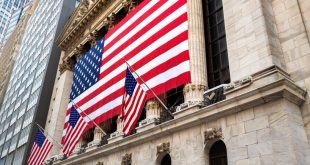In an interview conducted by Alarabiya Television, Mohamed Hashad, Head of Research and Development at Noor Capital and a member of the American Association of Technical Analysts, commented and analyzed the performance of the U.S. and china trade war, and the potential future moves of the Federal Reserve.
Q: How do you interpret the implications of this 90-day truce agreement on various assets? To what extent can these gains be sustained in the markets? Have we entered a bullish trend for U.S. assets across the board?
The United States and China reached an agreement to suspend most tariffs. This agreement has given markets a significant sense of hope regarding the potential easing of trade tensions—or what many see as a trade war—between the world’s two largest economies. The agreement stipulates a 90-day suspension of tariffs, and this has strongly impacted all markets and sectors, especially equities and oil.
We’ve seen oil prices rise by more than 2.5%, and U.S. markets reacted positively, with the Dow Jones leading the rally and posting gains of around 2.5%, remaining above the 240,000 mark. The broader S&P 500 index also returned to levels seen before the imposition of tariffs. There’s clearly a wave of optimism, as investor sentiment has significantly improved—evident in the Wall Street indices and in the VIX index, which fell to its lowest level in a month and a half. Currency markets also responded strongly, with the U.S. dollar climbing to its highest level since April 10.
Q: Are these gains sustainable? Has the overall outlook really changed, or is it too early to tell before a final trade deal is reached between the two countries?
In my opinion, these gains are temporary. The core issue hasn’t been resolved; this is more of a transitional or cooling-off period that lasts only 90 days. Many complex issues will be discussed over the next three months. So I believe these market gains are likely short-lived and will remain so until a final resolution is achieved on the trade dispute.
Q: To what extent do you think this news gives the Federal Reserve more room to delay rate cuts? Do you now expect two rate cuts, as markets increasingly seem to anticipate?
I expect two rate cuts, especially given that the easing of trade tensions and the reduction of tariffs between the world’s two largest economies create an opportunity for inflationary pressures to subside somewhat. From my perspective, this won’t immediately or directly resolve inflation, but as tariffs decline, import costs will also decrease, which will eventually reflect in lower final prices for goods. That could ease inflationary pressure. So yes, I lean toward the scenario where the Fed cuts rates twice, not three times.
Q: We’ve seen a negative reaction in gold prices. Do you think these losses could accelerate given increased risk appetite? Or do you still see an upward trend in gold, especially with strong central bank buying?
I still favor an upward trend. Central banks are making substantial gold purchases—China in particular is actively buying large quantities of gold as part of its strategy to diversify reserves away from the U.S. dollar. Ongoing geopolitical tensions in various regions further support gold. I believe the recent decline is just profit-taking amid improved risk appetite. Especially after the strong rally in gold prices that saw levels reaching up to $3,500, we haven’t seen significant corrections during the rise. So I think the current pullback is temporary, and the overall trend for gold remains upward.
 Noor Trends News, Technical Analysis, Educational Tools and Recommendations
Noor Trends News, Technical Analysis, Educational Tools and Recommendations




